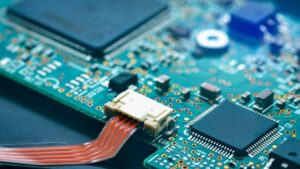Multi-layer PCBs Advantages and Applications
2022-10-14As society's technology evolves and PCBs power many industries and devices, our demand for different types of PCBs continues to grow.
Before investing in a new PCB, you should understand the advantages and disadvantages of each option. As far as wiring is concerned, the more layers the better for wiring, but the cost and difficulty of making the board also increases. So, the choice of layers needs to consider all aspects of the needs to achieve the best balance.
What is a multilayer PCB?
Single-layer PCBs are usually used for simple devices with only one layer of conductive material, and you will find the conductive wiring pattern mounted on one side of the board and the components mounted on the other. Double-layer PCBs are similar to single-layer PCBs but have more functional layers than single-layer PCBs, and double-layer PCBs have two conductive layers.
Multilayer boards are more complex than double-layer boards, with three or more layers of conductive materials, two of which are on the outer surface, while the remaining layer is synthesized within the insulating board. The electrical connection between them is usually achieved through plated through-vias in the cross-section of the board.
Advantages of multilayer PCBs
Circuit boards determine the process difficulty and processing price according to the number of wiring surfaces. For high-end electronic products, in addition to surface wiring, multiple layers of circuits can be stacked inside due to the product space design factor. In general, these boards are smaller and lighter, ideal for smart products, the following are the specific advantages of multilayer PCBs.
- Multi-layer circuits offer more functionality
- Provides faster speeds than single-layer PCBs, double-layer PCBs
- Longer life of the board
- Has rigorous testing during the manufacturing phase
- Applicable to both rigid and flexible structures
Limitations of multilayer printed circuit boards
Despite the many advantages of multilayer printed circuit boards, there are some disadvantages that cannot be ignored
- Increases manufacturing costs
- Longer manufacturing time
- Relatively more difficult to maintain
Applications of multilayer printed circuit boards
Products in many industries can benefit from multilayer printed circuit boards.
- Computer equipment
- Medical equipment
- Fire alarms
- GPS and satellite systems
- Industrial control equipment
- Military applications, etc.
Turn to KingPCB for your projects!
KingPCB is a leading supplier of multilayer printed circuit boards. We provide reliable multilayer printed circuit board products for a variety of industries from medical instrumentation to test services.
Contact KingPCB today to learn more about our PCBs and to select the solution that best fits your needs.




